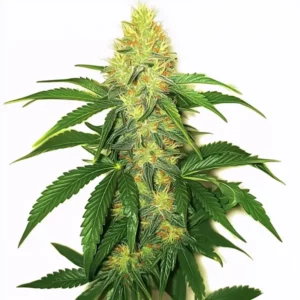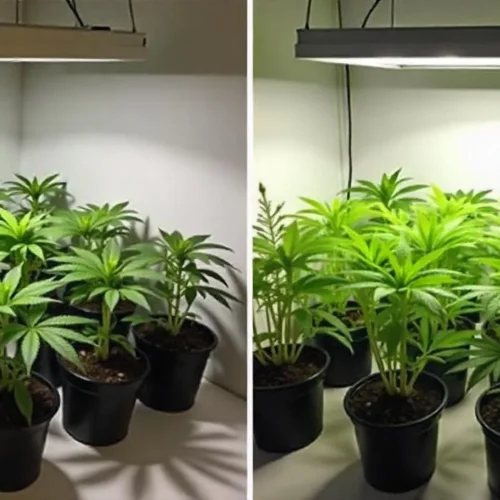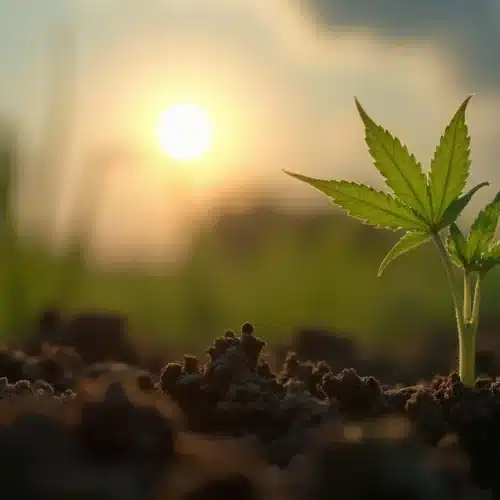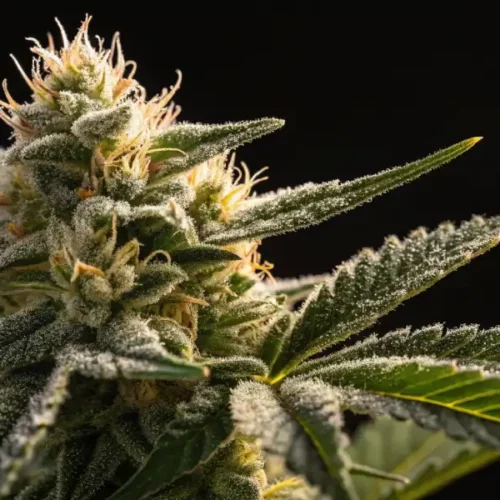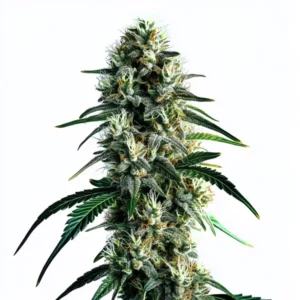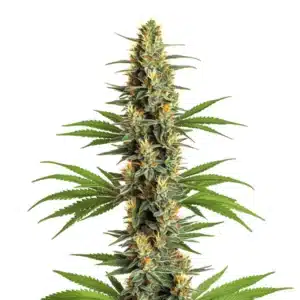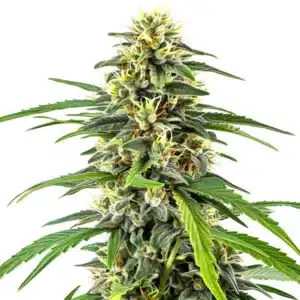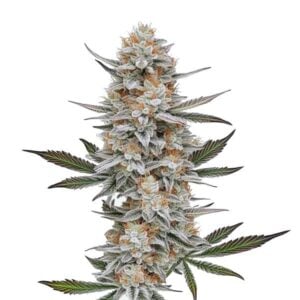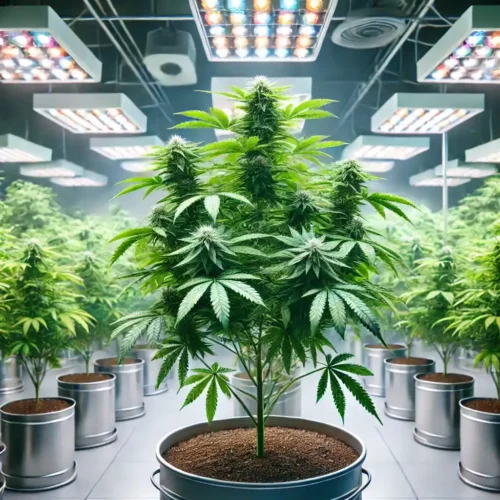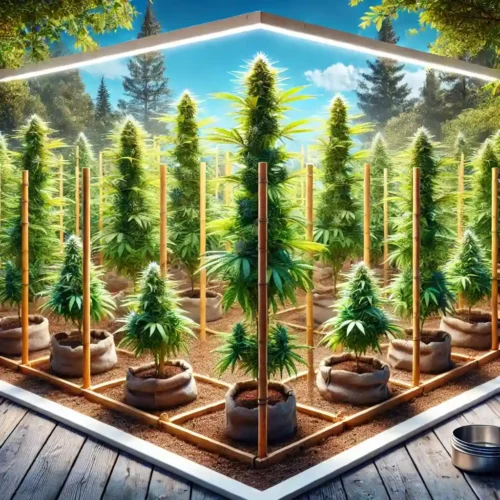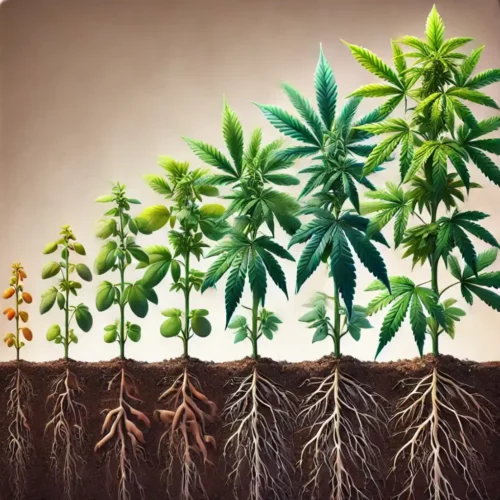Growing cannabis can be a deeply rewarding experience, especially when the yield meets or surpasses expectations. Calculating the potential yield per plant is crucial for planning, whether you are growing for personal use or running a commercial operation. A cannabis yield calculator offers a straightforward way to predict your harvest based on specific variables, helping you maximize your efforts and resources.
Accurately estimating yields allows growers to prepare properly for the post-harvest phase, including drying, curing, and storage. This knowledge also helps growers manage their supplies, especially if they are cultivating for personal use and need to meet specific consumption needs over time. For commercial growers, yield predictions are essential for projecting profits, scaling operations, and making informed decisions about the use of available space.
It’s important to remember that while a calculator can be a useful tool, it should be used in conjunction with hands-on experience and careful observation of your plants. Even with precise inputs, various unpredictable elements can affect yields, such as weather changes in outdoor grows or unexpected issues with nutrient uptake in indoor grows. Combining technology with intuition and experience is the best way to ensure successful harvests.
Key Factors that Influence Cannabis Yields
Various factors affect the yield of cannabis plants. These include the strain, grow method, environment, and level of care provided during the plant’s lifecycle. Understanding how these elements work together is critical for accurate yield estimation.
Genetics: The Foundation of Yield
The cannabis strain plays a huge role in determining potential yields. Using a weed strain calculator can help growers estimate yield variations based on genetics. Some strains are bred for high production, offering significantly larger harvests. Strains like Amnesia Haze, Big Bud, or Critical are well-known for their impressive output, while other varieties focus on delivering unique flavors, aromas, or effects rather than sheer quantity.
Indica strains tend to grow shorter and bushier, which can affect the overall yield, while sativa strains typically grow taller and produce larger yields. However, sativas also take longer to mature, which could be a consideration if you’re trying to achieve faster harvest cycles. Hybrid strains offer the best of both worlds, allowing growers to balance yield with plant characteristics like height, potency, and resilience.
Beyond just the type of strain, the phenotypes within a strain can vary, affecting the plant’s growth patterns and yield potential. Different phenotypes might express traits such as faster growth, larger buds, or even increased resistance to pests and diseases, which could directly impact the final yield.
Light: The Driving Force Behind Growth
Light exposure significantly impacts a plant’s ability to produce buds. Cannabis plants thrive under high-intensity lighting, such as high-pressure sodium (HPS) or LED grow lights. More light typically equates to more robust growth and larger yields, provided other conditions are optimal.
The type of light spectrum used during the vegetative and flowering stages also plays a crucial role. During the vegetative stage, a blue spectrum (around 400-500 nm) encourages leafy growth, while a red spectrum (around 620-780 nm) is more beneficial during the flowering stage to boost bud production. Utilizing a full-spectrum light, which mimics the sun’s natural range, can help your plants reach their full potential.
To maximize your light’s effectiveness, consider the distance between the light and the plants. Too close, and the light may cause heat stress or light burn. Too far, and the plants might stretch, reducing their bud-producing potential. Regularly adjusting the lights and monitoring the plant’s response is key to optimizing yields.
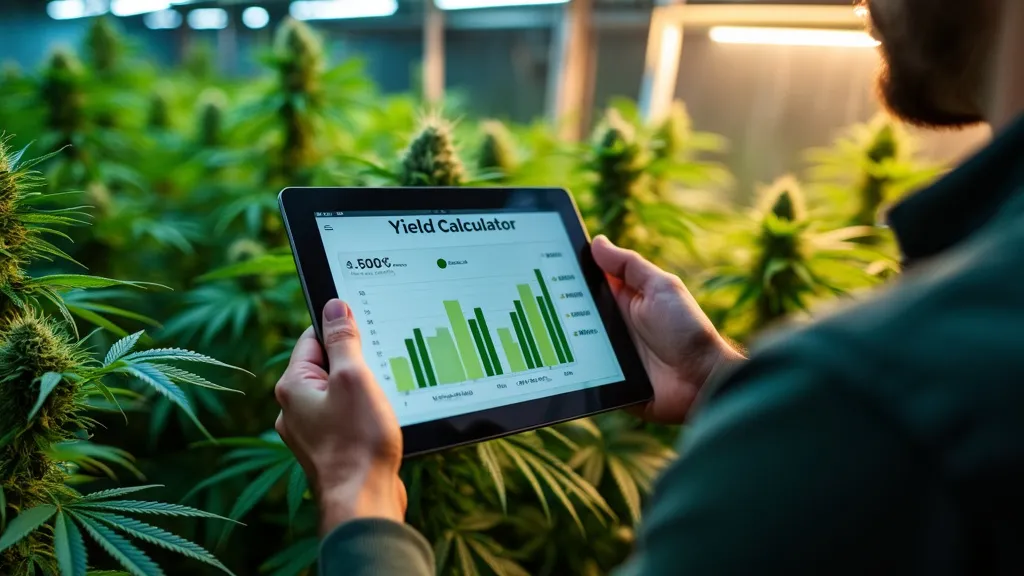
Grow Method: Soil vs. Hydroponics
Different grow methods also influence the yield. Growing in soil is the traditional method and can produce high-quality buds with rich flavors. However, soil-based growing generally results in lower yields compared to hydroponics, where the plants grow in a nutrient-rich water solution.
Another method, aeroponics, allows the plant’s roots to be suspended in air while being misted with a nutrient solution. This method can increase yield potential even further due to the enhanced oxygenation and nutrient uptake. However, aeroponics systems require more technical expertise and investment to set up and maintain. Growers who master these advanced techniques can experience accelerated growth cycles and higher yields, but the learning curve may deter some from switching from soil or hydro.
Organic growing, while it may not always lead to the highest yields, can produce premium-quality cannabis. Many connoisseurs prefer organically grown cannabis for its superior flavor and effect, though the yield might be slightly lower than hydroponic or aeroponic systems. The choice of method often depends on the grower’s goals, whether they prioritize quantity, quality, or a balance of both.
Environmental Conditions: Temperature and Humidity
Cannabis is sensitive to temperature and humidity levels. Indoor growers have the advantage of controlling these conditions. Ideal temperatures for cannabis plants during the day range between 70–85°F (20–30°C), while humidity levels should be adjusted based on the plant’s growth stage.
For indoor growers, investing in equipment such as dehumidifiers, humidifiers, and fans can help regulate the environment. These tools are especially useful during the flowering stage when high humidity can cause mold and bud rot, leading to significant losses. Advanced growers may even introduce CO2 enrichment in their grow rooms, which can increase plant growth and yield by allowing plants to use more light energy.
Outdoor growers face more variability with environmental factors, and success often depends on choosing the right strain for their specific climate. Some strains are more resistant to mold and thrive in higher humidity environments, while others prefer dry, sunny conditions. Taking the time to research and select the right strain for your growing location can make a significant difference in your yield.
Promos & Deals
How a Cannabis Yield Calculator Works
A cannabis harvest calculator uses inputs like plant height, light source, growing medium, and environmental conditions to provide an estimate of potential yield. While it won’t be 100% accurate, it offers a solid baseline for what to expect under normal growing circumstances.
Input Variables for the Calculator
Here are some of the key variables you’ll input into the cannabis yield calculator:
- Strain: Indicates whether the strain is high-yielding or moderate.
- Light Source: The type and intensity of light used during growth.
- Growing Medium: Soil, hydroponics, or another medium that influences growth rate.
- Plant Height: The size of your plants, which often correlates with yield.
- Grow Area Size: The amount of space available for each plant to grow and spread.
- Environmental Factors: Includes temperature, humidity, and CO2 levels.
The calculator considers these variables and provides an estimate based on ideal growing conditions. However, results may vary, especially for newer growers or those still optimizing their growing environment. The goal is to use this estimate as a benchmark for improving future harvests by adjusting light levels, nutrient schedules, and training techniques.
Experienced growers can further refine their yield estimates by keeping detailed records of their grows. By tracking variables such as nutrient schedules, light cycles, and environmental conditions, growers can fine-tune their methods and increase the accuracy of future yield predictions. This data-driven approach helps maximize the efficiency of every grow cycle.
Estimating Yield for Indoor vs. Outdoor Growing
Growing indoors and outdoors presents different yield possibilities. Let’s break down the typical yield expectations for each setup.
Indoor Yields
When growing indoors, a controlled environment offers consistency, making yield predictions more reliable. On average, indoor growers using high-intensity lighting and optimized conditions can expect yields ranging from 0.5 to 1 gram per watt of light.
Indoor growers also benefit from the ability to control the light cycle, ensuring that plants receive the optimal amount of light for each stage of growth. For instance, plants in the vegetative stage typically receive 18 to 24 hours of light per day, while those in the flowering stage benefit from 12 hours of light and 12 hours of uninterrupted darkness. Proper management of these light cycles plays a significant role in determining overall yield.
Another factor that influences indoor yield is the size of the grow space. Larger rooms allow for more plants and greater overall harvests, but smaller setups with fewer plants can still produce impressive results with proper care and maintenance. Indoor growers often use advanced techniques such as Sea of Green (SOG) or Screen of Green (ScrOG) to maximize space and light exposure, which leads to higher yields per square meter. Using a grow room calculator yield tool can further optimize how much cannabis you can produce given your grow room’s dimensions and setup
Outdoor Yields
Outdoor plants tend to yield more due to the unrestricted space and natural sunlight. On average, an outdoor cannabis plant can produce anywhere from 500 grams to over 1000 grams (1 to 2 pounds) of usable buds per plant. In regions with longer growing seasons and more intense sunlight, yields can exceed these averages, with some plants producing up to 2.5 pounds or more under ideal circumstances.
The ability to plant directly in the ground or in large containers allows outdoor plants to grow much larger than their indoor counterparts, often reaching heights of 6 feet or more. Larger plants typically produce more flowers, leading to higher yields. However, outdoor growers must be vigilant about environmental threats such as pests, diseases, and extreme weather conditions, which can negatively affect yield.
Despite the potential challenges, outdoor growing is often less resource-intensive than indoor growing, making it an attractive option for those looking to achieve higher yields with less investment in equipment. Outdoor cannabis often requires less maintenance in terms of monitoring environmental conditions, though regular checks for pests and mold are essential for preventing yield losses.
How to Boost Your Cannabis Yields
Getting the most out of your cannabis plants takes careful planning and diligent care throughout the entire grow cycle. Here are several techniques and tips to increase your cannabis yields, regardless of your growing environment.
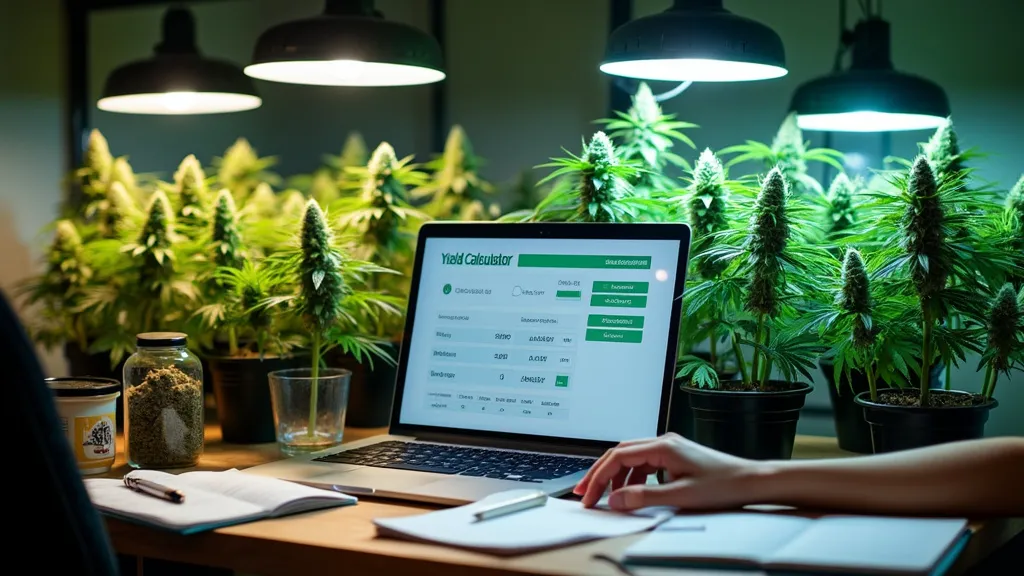
Optimize Lighting Conditions
Investing in a high-quality lighting system is one of the best ways to boost yields. Whether you’re using HPS, CMH, or LEDs, the key is ensuring your plants receive ample light during both the vegetative and flowering stages. For flowering plants, providing 12 hours of light and 12 hours of darkness helps induce heavy bud production.
In addition to light intensity, the duration of light exposure also plays a key role. Extending the vegetative light cycle can promote more substantial growth before the flowering stage begins, resulting in larger plants and bigger yields. However, once flowering begins, adhering to the correct light schedule is crucial for ensuring the development of dense, resinous buds.
Some growers also experiment with adding supplemental UV-B lighting during the flowering stage, as this has been shown to increase trichome production and potentially improve both yield and potency. While UV-B light is not essential, it can provide an extra boost for those seeking to optimize their harvest.
Proper Training Techniques
Training techniques like topping, low-stress training (LST), and screen of green (ScrOG) are great ways to control plant height and maximize light exposure. These methods encourage the plant to grow more evenly, producing multiple colas instead of just one dominant bud site.
Another useful training technique is defoliation, which involves removing fan leaves that block light from reaching the lower bud sites. This process helps to improve airflow and ensures that all parts of the plant receive adequate light. However, defoliation should be done cautiously, as removing too many leaves can stress the plant and negatively affect yield.
Some growers also use super cropping, a high-stress training technique where the plant’s branches are bent or pinched to encourage thicker stems and better nutrient flow. This method can result in a bushier plant with more bud sites and higher yields, but it requires experience and careful handling to avoid damaging the plant.
Use High-Quality Nutrients
Providing your plants with high-quality nutrients at each stage of growth is crucial for achieving large yields. During the vegetative stage, cannabis plants need more nitrogen to promote lush green growth. As plants transition to the flowering stage, phosphorus and potassium become more important, helping to develop dense, resinous buds.
Maintaining a proper pH balance is also essential for nutrient uptake. Most cannabis plants prefer a slightly acidic pH, around 6.0 to 6.5 in soil and 5.5 to 6.0 in hydroponic setups. Regularly testing and adjusting the pH of your water and nutrient solutions ensures that your plants can absorb the nutrients they need for healthy growth and abundant yields.
Some growers also incorporate organic additives such as molasses, compost teas, or mycorrhizae to improve soil health and boost microbial activity. These natural supplements can enhance nutrient absorption, promote root growth, and contribute to a more flavorful, aromatic final product.
Frequently Asked Questions
Can a yield calculator guarantee my harvest size?
While a cannabis yield calculator provides a helpful estimate, many variables affect the actual yield, including the grower’s experience, environmental conditions, and the strain’s genetics. Yield calculators rely on data such as plant height, light intensity, and growing medium to offer an estimate. However, even small changes in environmental conditions, like temperature fluctuations or pests, can drastically affect the final outcome. Growers should use the calculator as a guideline and focus on optimizing every aspect of their grow to achieve the best possible results.
Additionally, a yield calculator cannot account for unexpected issues like equipment failure or nutrient deficiencies. Regular monitoring and adjustments are key to addressing problems before they impact the harvest. While the calculator offers a useful starting point, ongoing care and observation will ultimately determine the success of your yield.
What strain has the highest yield potential?
Strains like Critical, Big Bud, and Amnesia Haze are known for their high yield potential when grown under optimal conditions. These strains have been specifically bred to maximize bud production, making them popular choices among commercial growers and those looking to maximize their personal stash. Critical is particularly famous for its fast flowering time and heavy yields, making it a great option for both indoor and outdoor growers.
However, the potential yield of any strain also depends on the grower’s experience and techniques. Even a high-yielding strain can underperform if it’s not given the proper care. Paying close attention to the strain’s specific needs, including nutrient requirements and environmental preferences, will help ensure that it delivers on its full yield potential.
How can I increase the yield of my indoor grow?
You can increase indoor yields by optimizing light exposure, using training techniques like LST or ScrOG, and providing the right nutrients during each stage of the plant’s lifecycle. Start by ensuring that your plants receive the appropriate amount of light for their stage of growth. Using reflective materials around your grow space can help increase light penetration, allowing more of your plants to benefit from the available light.
Training techniques such as low-stress training help create a more even canopy, allowing light to reach all bud sites, while topping and super cropping can promote more extensive bud development. These methods take time and patience but are proven to significantly boost yields in indoor environments where space is limited.
In terms of nutrients, regularly feeding your plants with the right balance of macronutrients (nitrogen, phosphorus, and potassium) and micronutrients is critical. Indoor growers should also monitor the pH levels of their nutrient solutions and adjust as needed to ensure optimal absorption.
Are outdoor plants more productive than indoor ones?
Outdoor plants generally have the potential to produce more due to natural sunlight and unrestricted space. However, indoor growing offers more control over environmental factors, potentially leading to more consistent yields. Outdoors, cannabis plants can grow much larger, resulting in higher yields per plant, especially in areas with favorable climates. The ability to plant directly into the ground allows for extensive root systems, which support bigger plants and larger harvests.
The downside of outdoor growing is that it leaves plants vulnerable to environmental challenges, such as pests, diseases, and weather conditions. These factors can cause significant losses if not managed properly. On the other hand, indoor growers can create a perfectly controlled environment with optimal light, temperature, humidity, and air circulation. This allows for more consistent results, though indoor yields tend to be smaller than what’s achievable outdoors due to space limitations.
Ultimately, the choice between indoor and outdoor growing depends on your specific circumstances. Outdoor grows can yield huge harvests in the right conditions, but indoor growing provides more predictability and year-round growing opportunities.




